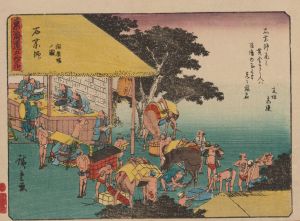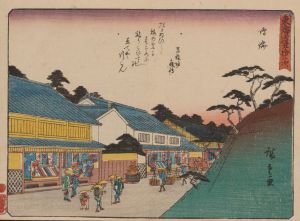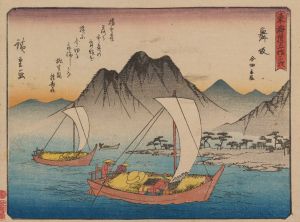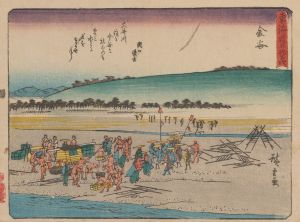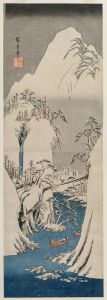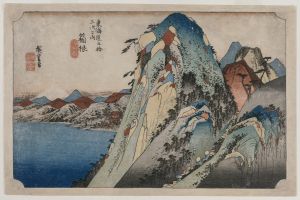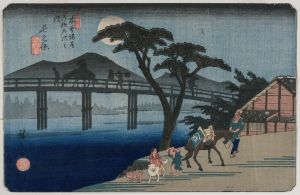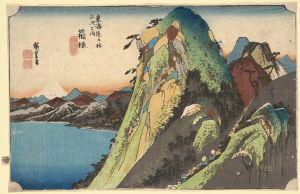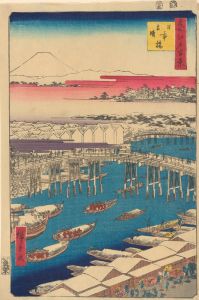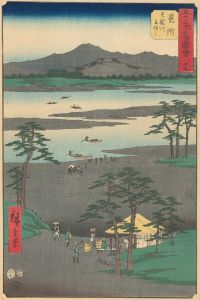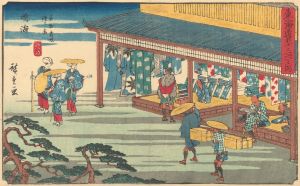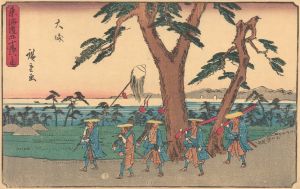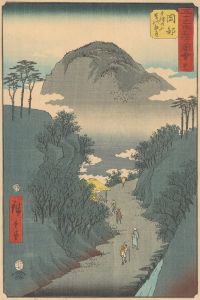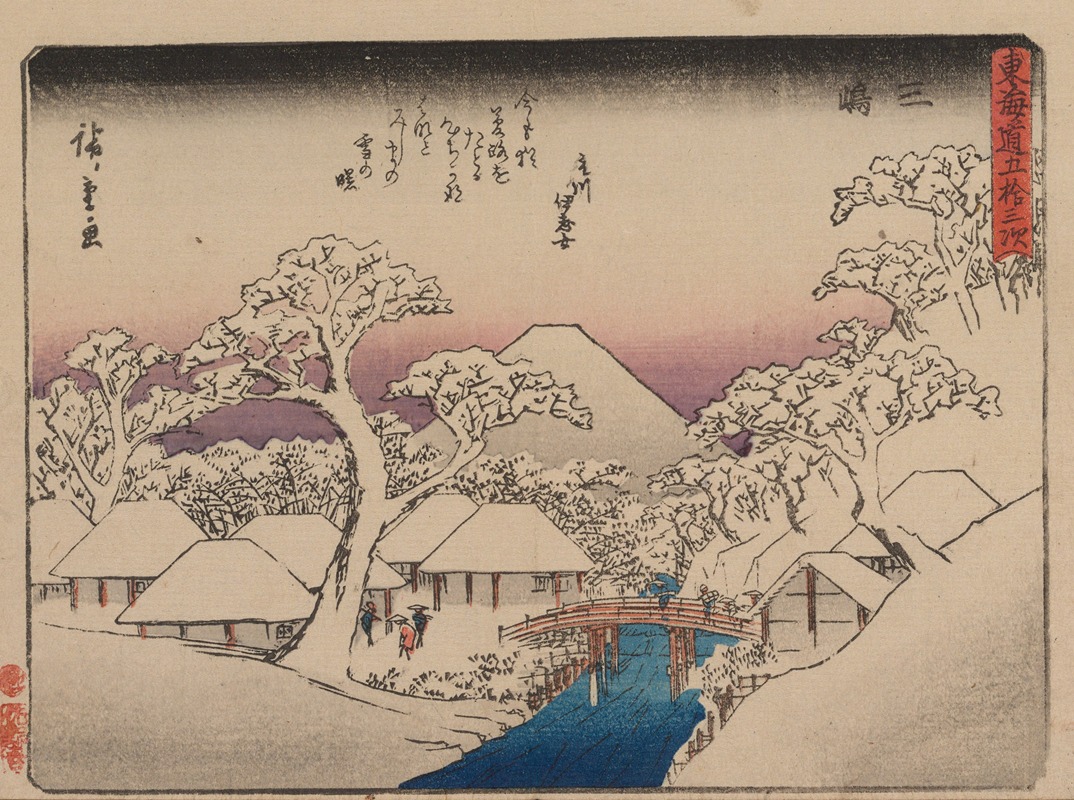
Tokaido gojusantsugi, Pl.12
A hand-painted replica of Andō Hiroshige’s masterpiece Tokaido gojusantsugi, Pl.12, meticulously crafted by professional artists to capture the true essence of the original. Each piece is created with museum-quality canvas and rare mineral pigments, carefully painted by experienced artists with delicate brushstrokes and rich, layered colors to perfectly recreate the texture of the original artwork. Unlike machine-printed reproductions, this hand-painted version brings the painting to life, infused with the artist’s emotions and skill in every stroke. Whether for personal collection or home decoration, it instantly elevates the artistic atmosphere of any space.
Andō Hiroshige, a renowned Japanese ukiyo-e artist of the Edo period, is celebrated for his landscape prints and depictions of the Tōkaidō road, a vital route connecting Edo (modern-day Tokyo) to Kyoto. Among his most famous works is the series "The Fifty-three Stations of the Tōkaidō" (Tōkaidō Gojūsan-tsugi), which captures the scenic beauty and cultural significance of the road's various stations. Plate 12 of this series is one of the many prints that illustrate the journey along this historic route.
The Tōkaidō road was one of the five major routes of the Edo period, facilitating travel and trade between the shogunate's capital and the imperial city. Hiroshige's series, created after his own travels along the Tōkaidō in 1832, offers a visual narrative of the journey, highlighting the diverse landscapes, weather conditions, and daily life encountered along the way. Each print in the series corresponds to a specific station, providing a glimpse into the unique characteristics and atmosphere of each location.
Hiroshige's work is distinguished by its use of perspective, vibrant colors, and attention to detail, which together create a sense of movement and depth. His ability to capture the transient beauty of nature and the human experience of travel is evident in Plate 12, as in the rest of the series. The prints often depict travelers, merchants, and locals, set against backdrops of mountains, rivers, and coastal scenes, reflecting the harmonious relationship between people and their environment.
The series was published by Hoeido and Senkakudo, with the first edition released between 1833 and 1834. It quickly gained popularity, establishing Hiroshige as a master of the ukiyo-e genre and influencing subsequent generations of artists. The Tōkaidō series is notable for its innovative compositions and the way it captures the essence of each station, making it a valuable historical record of the Edo period.
Hiroshige's work, including Plate 12, is characterized by its lyrical quality and the artist's keen observation of the world around him. His prints not only serve as artistic masterpieces but also as cultural documents that provide insight into the social and economic dynamics of the time. The Tōkaidō series remains a significant contribution to Japanese art, celebrated for its beauty and historical importance.
In summary, Andō Hiroshige's "The Fifty-three Stations of the Tōkaidō" series, including Plate 12, is a testament to the artist's skill and vision. It captures the spirit of travel and the diverse landscapes of Japan during the Edo period, offering a window into a bygone era. Hiroshige's work continues to be admired for its artistic excellence and its role in preserving the cultural heritage of Japan.





